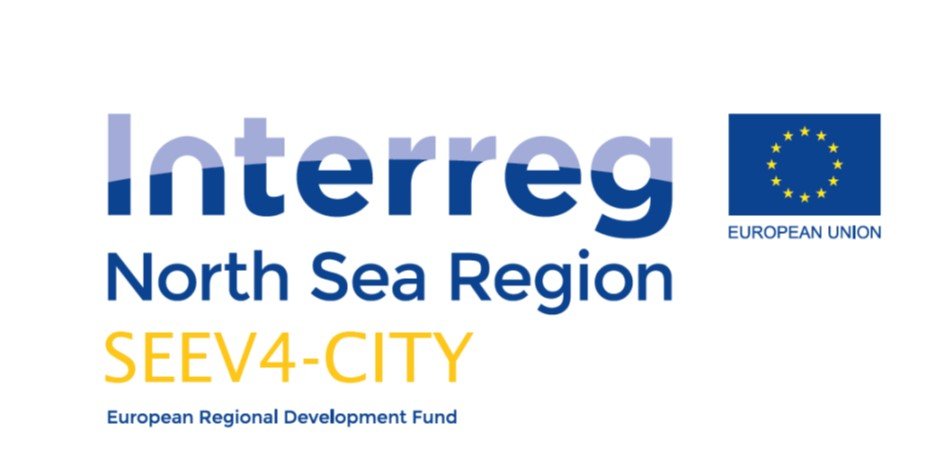SEEV4-City Newsflash: V2G-Repository presents 18 European Vehicle2Grid-projects
 In the past few years, a growing number of Vehicle2Grid (V2G) pilots have been initiated, but information about these projects is largely scattered and hard to compile. A new document now provides an overview of ongoing and/or proposed Vehicle2Grid (V2G) pilot projects in Europe.
In the past few years, a growing number of Vehicle2Grid (V2G) pilots have been initiated, but information about these projects is largely scattered and hard to compile. A new document now provides an overview of ongoing and/or proposed Vehicle2Grid (V2G) pilot projects in Europe.
The V2G repository document contains basic descriptions as well as the most notable characteristics of these pilots such as location, partners, scale & type, the running time of the project and supply chain participation.
The V2G repository is based on secondary research (desk research) carried out by the Amsterdam University of Applied Sciences (AUAS) and was verified by contacting the coordinators/project leaders of the listed projects.
A quick analysis of this listing of current V2G projects shows that:
- These projects include a variety of stakeholders - from universities and research institutes, to electric vehicle manufacturers, grid operators and municipalities. Two major EV manufacturers involved on these V2G projects are Nissan and Mitsubishi Motors.
- Each project has its own characteristics (Unique Selling Point). A common feature of a majority of the projects is combining Solar PV with bi-directional chargers. Other features include corporate car sharing, energy buffer solutions, V2G for Frequency Containment Reserve (FCR) services.
- The mentioned V2G pilots are being demonstrated in ten European countries. The Netherlands (7 projects), the U.K. (6 projects) and Denmark (2 projects) are the frontrunners, followed by Norway, Belgium, Finland, Spain, Italy, France, Greece.
- NUVVE is the leading aggregator associated with 3 of the listed V2G projects. Other aggregators found include NewMotion, Jedlix, Direct Energie, Virta, Enervalis and the Italian Institute of Technology (IIT).
- The scale of these projects varies from single households to large public charging stations. The number of V2G units considered among these projects ranges from 1 to 50, while the number of EVs ranges from 1 to 100.
- On an average, the running time of these projects is between 2 to 3 years.
- The main V2G hardware providers (bidirectional charger) are Enel, MagnumCap and Endesa. Others include General Electric, Last Mile Solutions, Helen and PRE. Currently, not many other hardware providers provide operational V2G chargers.
- The Charging Point Operators (CPO) involved on these projects include companies like NewMotion, Engie, LomboXnet, NuVve, HEDNO, and Virta.
- CHAdeMO is the most commonly-used charging standard on these V2G projects, which could be attributed to the fact that it was one of the first standards to support V2G. CCS/Combo was used as the charging standard protocol on two of the listed projects.
- The V2G projects have different operational environments, such as Vehicle-to-Home (V2H), Vehicle-to-Street (V2S), Vehicle-to-Neighbourhood (V2N) and Vehicle-to-Business (V2B). Out of these, V2B is the most common operational environment adopted on these projects.
If you wish to receive SEEV4-city Newsflash, please follow the link and register your e-mail address.
For more information about the Interreg North Sea Region - SEEV4-City project, please visit the project website.

